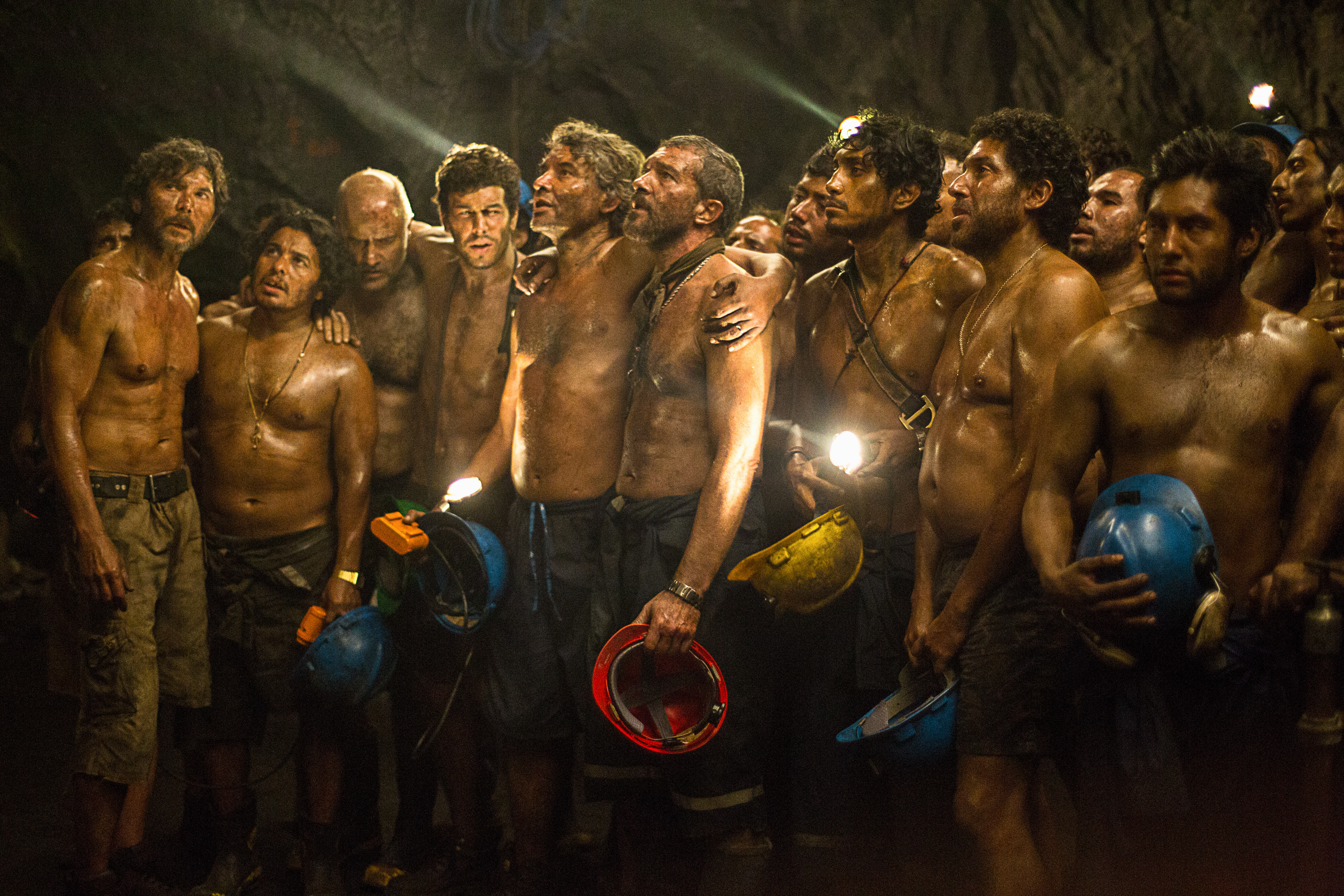There are several reasons to praise “The 33.” It has a female director, it features a predominately Latin-American/Spanish cast, it devotes a significant amount of screen time to its female characters. Sadly, none of these reasons have to do with the quality of the film itself – which is poor at best.
“The 33” attempts to tell the true story of the 33 Chilean miners who were trapped over 2,000 feet below the earth’s surface. The opening of the film has a lot of promise. When the workers first drive into the caves, there is a particularly ominous shot of the reflection of the mine’s entrance growing across the car windshield until it has blocked out everything. And, after the protagonists have entered the mine, there is a particularly effective long take where the camera pans out beyond the characters to show the rest of the mine, and then just keeps panning and panning beyond comprehension. At the end of the shot, our protagonists are rendered as nothing more than specks of light in a vast and foreboding chasm.
But the film only gets worse from there. A few minutes after our characters have entered the mine, it suffers a catastrophic cave-in. They recover to find that they are all, miraculously, still okay. But they are trapped in a mine that is still actively shifting, preventing any possibility of escape. The charismatic Mario (Antonio Banderas) tries to rally everyone’s spirits, but he has to contend with the reality that they have barely enough food or water to last three days. Meanwhile, on the surface, the wives and relatives of the miners angrily confront the mining company about the collapse but their pleas fall on deaf ears. That is, until the rescue operation is eventually taken over by the charismatic and driven Chilean minister of mines, Laurence Goldborne (Rodrigo Santoro).
This is what happens in the film, and it does largely conform to the accepted facts of the incident. Everyone, however, should be hesitant about using this film as an accurate analysis of the actual Chilean disaster. “The 33” uses practically every cinematic cliché possible in its attempt to portray the event. Every character is generic and paper-thin. One miner is a surly alcoholic, who recovers thanks to the devotion of his fellow miners. Another miner is a wise-cracking lothario whose time in the mine convinces him to enter into a stable relationship. A third is on his last week before retirement.
In keeping with this theme of lazy screenwriter, practically every line of dialogue consists of a character stating exactly what they are thinking. The film even has that terrible trope where a last-minute, life-saving idea is inspired by an offhand comment made by a random character. Do people in Hollywood really believe human beings think like that? Has anyone in Hollywood ever had an original thought before?
Taking a fascinating, real-life incident and populating it with generic clichés is annoying, but it is not fatal. There are many terribly cliché films that still manage to be entertaining. “The 33” is not one of them. There is no real tension during the work. The film is unwilling to fully commit to exploring any of the interesting problems that would naturally arise from being stranded underground. When the miners are running out of food, Mario just rations out less. The end. When the drill the government is using to rescue the miners breaks, they wait for new parts. The end. None of the drama is ever sustained or developed and nothing feels consequential.
In short, if people choose to see this film to support Chilean cinemam I commend them – though they should be warned that the cast has relatively few Chileans and all the dialogue is in English. But if people choose to see this film because they want to watch an entertaining and moving work – they are making a huge mistake.
Contact Raymond Maspons at raymondm ‘at’ stanford.edu.
